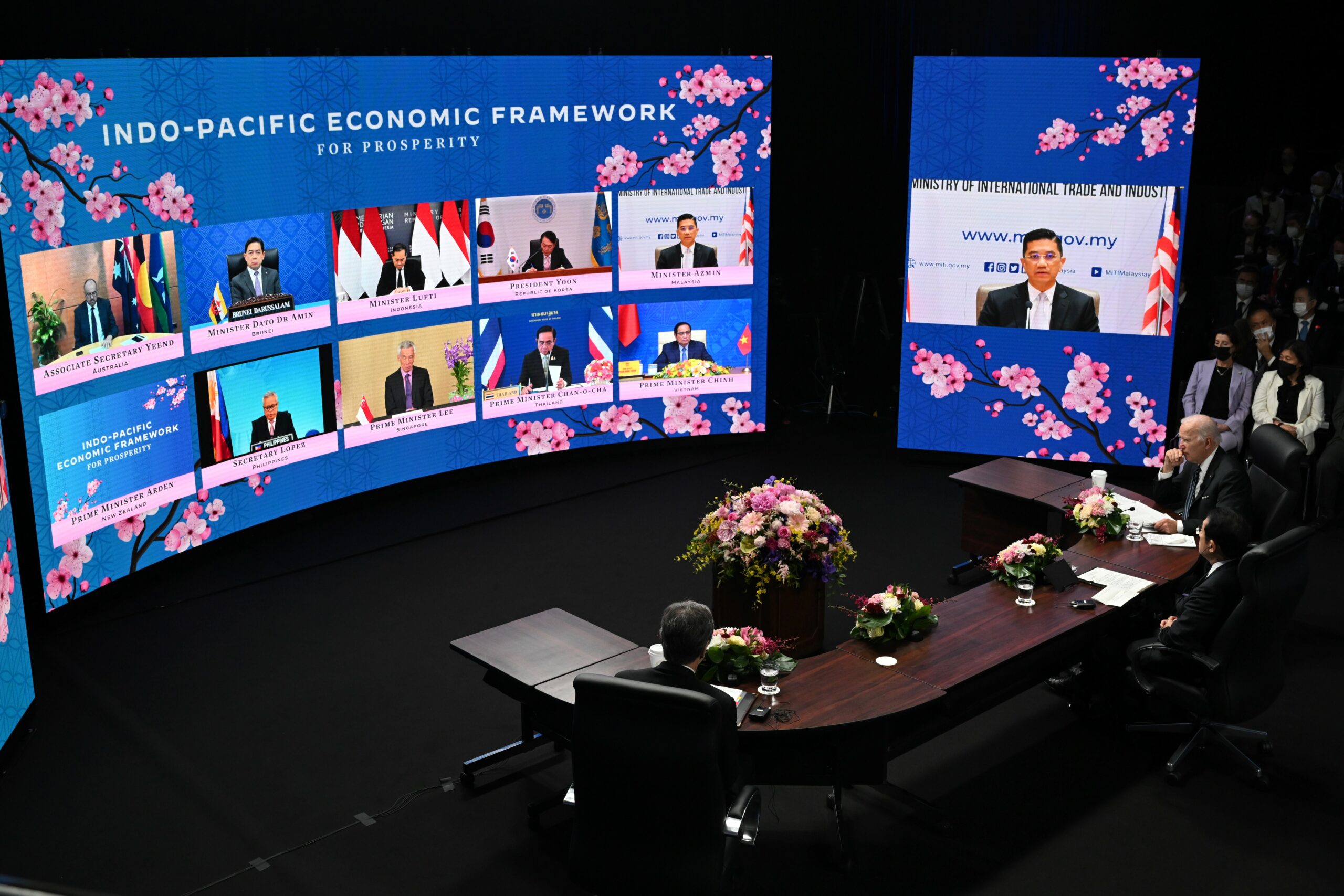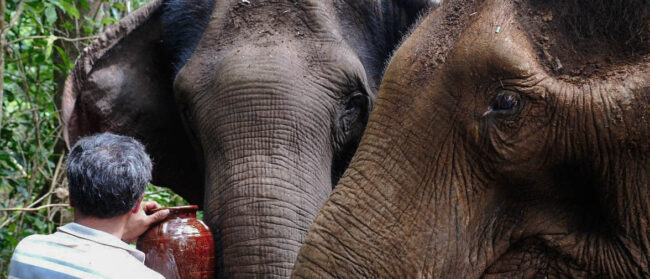U.S. President Joe Biden has pledged a “new era” of U.S. – ASEAN ties. While Southeast Asian states like Thailand, Malaysia, Vietnam and Indonesia announced their interest in Biden’s Indo-Pacific Economic Framework (IPEF), the economic gains from the framework could be a long time coming.
Biden launched the IPEF while on a late May visit to Tokyo, describing it as “writing the new rules for the 21st century economy.” Almost five years after the United States withdrew from the Trans-Pacific Partnership (TPP), the new IPEF has 13 participant countries and aims to revitalise American economic interest in the Indo-Pacific region, providing a reasonable alternative to China.
In its Joint Statement, the IPEF detailed that it contains no actual binding legal commitments on the part of partner states, although it describes four areas of potential collaboration: fair trade, supply chain resilience, clean energy and decarbonisation, as well as tax and anti-corruption initiatives.
The benefits at the moment are slim for Southeast Asian states but being a signatory to IPEF comes with zero risk and being a founding partner could enable countries to mould future arrangements in line with their own national interests or stated economic goals.
At this early stage it is unclear which states will take the lead on any of the four underlying pillars of the IPEF and the economic framework appears exclusive rather than inclusive. Thailand is likely using the economic framework as part of its ongoing balancing strategy with the United States and China. Political considerations were added that prevented the addition of Cambodia and Laos. Joining the framework might antagonise their close relationships with China, and human rights concerns, such as those impacting Myanmar, were a barrier. Taiwan lobbied considerably for entry, but Biden was unwilling to accept its entry at the expense of Southeast Asian countries such as Indonesia, which were fearful of repercussions from Beijing.

In its infancy, the IPEF is somewhat vulnerable and partner countries are right to be concerned both about economic benefits, which are said to represent about 40% of global GDP, as well as American commitment to its own initiative. Unlike the TPP, the IPEF does not offer “carrots” or incentives to partner countries in exchange for compliance with the economic framework’s rules and regulations. This was a political consideration by the Biden Administration designed to secure memberships and avoid domestic political opposition in the United States by Republicans, particularly if IPEF required congressional approval. Democrats face significant political headwinds and a fight that could draw on nationalist sentiment is something Biden would like to avoid. But the lack of incentives by default water down the overall quality of the economic framework. Only incentives will resolve differences among member states, particularly those with concerns over labour and environmental standards like India, Vietnam, and Malaysia.
Biden’s lack of commitment to his own initiative, through avoiding a contentious political fight in Congress has made other states question this new American economic “pivot” to the Indo-Pacific.
Several countries have expressed concerns that IPEF isn’t well thought out or developed, even though the pillarsare important regional issues, such as resilient supply chains. Vietnam’s Prime Minister Pham Minh Chinh, suggested in a speech to the Center for Strategic and International Studies (CSIS), that digital economy and transformation, as well as anti-corruption are important to Hanoi, but “the concrete elements of that initiative [has] not yet set in – [has] not yet [been] clarified.” Chinh urged Biden to further clarify what the pillars will entail.
Part of state resistance comes from the perception that IPEF is more of a political group rather than an extended economic one. Predictably, Chinese Foreign Minister Wang Yi suggested that IPEF was an attempt to decouple the region from China, and that the initiative was “doomed to fail”. It is also concerning that IPEF does not have much representation from the Pacific Island states. Critics have suggested that Biden’s “all guns and no butter” strategy would only cause China to use its considerable influence in the region to pressure other countries not to take part, or in other words, poison the well. The many divisions that separate partner countries are testament to the fact that these criticisms have merit.
Countries like India and Thailand are just two Asian economies keen to boost agricultural exports to the United States and decrease their growing economic dependence on exports to China, however they would like to do that without the endless problem of tariffs and other barriers. The majority of Thailand’s exports have shifted away from agricultural products to manufacturing, but food exports are an essential part of Thailand’s modern economy. According to the U.S. Department of Trade, Thailand is the world’s largest exporter of tapioca products, rubber, frozen shrimp, as well as canned tuna and pineapple. Countries may be banking that the IPEF, despite any significant detail, could lead to a situation where dialogue and negotiation take place that allow incentives for partner countries, particularly favourable access to American markets.
There are other problems beyond agriculture. Thailand’s digital economy is projected to grow as much as 20% by 2025. Thai Prime Minister Prayut Chan-o-cha called for a kind of “digital ecosystem” for Southeast Asia in 2018, with Thailand being an essential hub for innovation. But Thailand isn’t engaged as it should be, especially on trade. It ratified the Chinese-led Regional Comprehensive Economic Partnership (RCEP), but hasn’t budged on the successor to TPP, the Comprehensive and Progressive Agreement for Trans-Pacific Partnership. With regard to its digital economy, particularly data management and transfer, which under Thai law are only allowed under very specific rules and criteria under Thai law, which hinders the development of its digital economy. The impact of Thailand’s data protection law was postponed due to Covid-19, as compliance and pandemic response would have been burdensome to Thailand’s many small to medium sized enterprises.
Thailand’s Personal Data Protection Act (PDPA), as it is known, is rather controversial. Many businesses have objected to the implementation of the Act, worrying about compliance, as well as the draconian enforcement measures, which can carry a jail sentence. In the context of IPEF, Thailand has little reason to comply or amend their digital standards to that of the United States.
This new economic framework, in theory, has the potential to reshape international trade standards and foster cooperation among a number of critical regional issues, such as supply chains, labour standards, environmental practices, and more. However the IPEF remains constrained by its intentional vagueness. The four pillars need shaping and development by engaged partners in order for them to be meaningful, which dispenses with any notion that there will be any immediate economic benefit from the partnership in the short term.
Mark S. Cogan is an associate professor of Peace and Conflict Studies at Kansai Gaidai University in Osaka, Japan. He is a former communications specialist with the United Nations in Southeast Asia, Sub-Saharan Africa and the Middle East.


